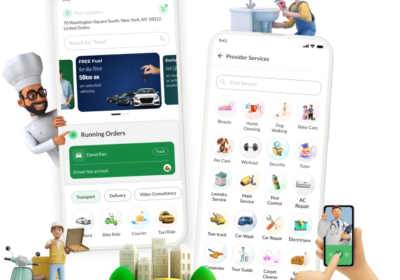Are Solar Panels Safe in Stormy Central Coast Weather?
Overview
- Category: Other Community
Description
As the popularity of renewable energy continues to rise in Australia, more homeowners are turning to solar power to reduce energy bills and cut down on carbon emissions. The Central Coast of New South Wales, with its sunny climate, is an ideal region for solar energy adoption. But one question that often arises among homeowners is: Are solar panels safe in stormy Central Coast weather?
At Zeneco Energy, we understand your concerns. With unpredictable storms, heavy rains, and the occasional hail event, it’s natural to question the resilience and safety of solar installations. In this blog, we’ll explore how modern solar technology fares in wild weather and whether your investment in a home solar system Central Coast is truly storm-proof.
Understanding Central Coast Weather Patterns
The Central Coast experiences a temperate climate with warm summers and mild winters. However, like many parts of Australia, it is no stranger to extreme weather. Thunderstorms, strong winds, torrential rain, and even hail can occur—especially during the warmer months. These weather events raise understandable concerns for residents considering rooftop solar panels.
When investing in a home solar system Central Coast, it’s crucial to evaluate not only the financial and environmental benefits but also the safety and durability of the equipment used.
Are Solar Panels Built for Tough Weather?
The short answer is: yes.
High-quality solar panels are designed to withstand harsh weather conditions. In fact, all solar panels sold in Australia must comply with strict standards and regulations outlined by the Clean Energy Council (CEC). This includes resilience to wind, hail, and other severe weather.
Here’s how solar panels and mounting systems are engineered for safety:
1. Wind Resistance
Solar panels installed by reputable providers like Zeneco Energy are tested to endure high wind speeds. Panels are typically rated to withstand winds of up to 240 km/h—well above the wind speeds experienced during most storms in the Central Coast region.
The key here is proper installation. Mounting systems must be securely anchored to your roof to prevent panels from being dislodged. Our team ensures every home solar system Central Coast we install complies with Australian safety standards and local building codes.
2. Hail Resistance
Another common concern is hail. While no panel is completely indestructible, modern panels are surprisingly tough. They are tested with hailstones up to 35mm in diameter travelling at speeds of 80–100 km/h. Quality panels, like those installed by Zeneco Energy, have tempered glass coverings designed to absorb impact without breaking.
In the rare case of larger hailstones causing damage, most solar systems are covered under homeowner insurance policies, making repair or replacement a manageable process.
3. Rain and Waterproofing
Solar panels are completely sealed, making them waterproof. The electrical components, such as the inverter and wiring, are also installed in weatherproof enclosures to prevent water ingress. Whether it’s a light drizzle or a summer downpour, your home solar system Central Coast is designed to operate safely and efficiently.
Lightning Strikes and Electrical Safety
Another storm-related concern is lightning. Can lightning damage your solar system? It’s possible—but extremely rare.
Direct lightning strikes on solar panels are uncommon. However, if your home is in a high-risk area or prone to electrical surges, surge protectors and proper earthing can greatly reduce risk. At Zeneco Energy, we assess your property and, if needed, install additional protective measures to safeguard your system.
Most importantly, solar systems are isolated from your internal electrical systems through safety switches and circuit breakers. This ensures that even in the event of a power surge, your home and family remain protected.
Bushfires and Solar Panel Safety
While not directly storm-related, bushfires are another weather-related risk in Australia. The good news is that solar panels themselves are non-combustible. They’re primarily made from glass and aluminium, both fire-resistant materials.
However, keeping panels free from dry debris such as leaves or bird nests helps reduce fire hazards. Zeneco Energy conducts regular inspections and maintenance to ensure your home solar system Central Coast operates safely year-round.
The Importance of Professional Installation
When it comes to weather resistance, the quality of your solar system installation is just as important as the equipment itself.
A poorly installed system may be vulnerable to:
Panels being ripped off during high winds
Water ingress damaging electrical components
Loose wiring posing fire hazards
At Zeneco Energy, we only use accredited technicians and follow industry best practices for every installation. We also provide tailored advice based on your home’s location, roof pitch, and exposure to weather. This personalised approach ensures each home solar system Central Coast we install is not only efficient but also resilient against the elements.
Solar System Maintenance After Storms
Although solar panels are low maintenance, it’s wise to perform a quick check after severe weather. Look for:
Visible cracks or damage to panels
Debris buildup (leaves, branches, bird nests)
Loose mounting components
If you’re unsure, contact Zeneco Energy for a post-storm inspection. Our technicians will safely assess your system and carry out any necessary maintenance or repairs. This not only extends the life of your home solar system Central Coast, but also gives you peace of mind.
Insurance and Warranty Coverage
Another key consideration for storm-prone regions is insurance. Most home insurance policies in Australia cover solar panels as part of the building, including weather-related damage.
In addition to insurance, your solar panels will come with manufacturer warranties—typically 10-25 years depending on the component. At Zeneco Energy, we also offer workmanship guarantees to protect your investment further.
Before installation, we’ll help you understand what’s covered under warranty and how to claim in the unlikely event of damage.
Final Thoughts: Are Solar Panels Safe in Stormy Weather?
Absolutely. Solar panels are designed with durability in mind and are more than capable of withstanding the challenging weather conditions often experienced on the Central Coast.
The key to a safe and long-lasting system lies in:
Choosing high-quality, certified panels
Ensuring professional, standards-compliant installation
Performing periodic inspections after major weather events
At Zeneco Energy, we take every precaution to ensure your home solar system Central Coast is robust, weather-resistant, and built to last. We’re committed to helping Central Coast residents harness the sun safely and efficiently—rain, hail or shine.
Read More :- https://zenecoenergy.com.au/central-coast-solar-installations/







